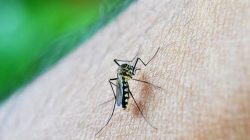Dogs Trained to Detect Parkinson’s Disease Through Smell
A groundbreaking study has revealed that dogs can be trained to detect Parkinson’s disease from a person’s skin secretions years before symptoms appear. This discovery could revolutionize early diagnosis and treatment for the neurological disorder, which currently has no definitive test or cure.
The research involved a pair of specially trained dogs that were able to identify Parkinson’s by analyzing sebum — an oily discharge from the skin. The dogs were tested using 100 skin swabs in a double-blind trial, where they demonstrated remarkable accuracy. Their sensitivity reached up to 80%, meaning they were able to correctly identify those with the disease, while their specificity was as high as 98.3%, indicating they could accurately determine who did not have the condition. This level of accuracy means there were very few false negatives or false positives in the trial.
Parkinson’s disease is a progressive movement disorder that affects brain neurons, causing them to weaken and eventually die. Common symptoms include tremors, stiffness, and difficulty with movement, which can make daily tasks challenging. According to the National Institute of Health, these symptoms often develop gradually over time, making early detection difficult.
What makes this study particularly significant is the potential for early intervention. Researchers believe that changes linked to Parkinson’s may be detectable in sebum excretions long before motor issues arise. This suggests that dogs could play a critical role in identifying the disease at a stage when treatment might be more effective.
The trial, conducted by Medical Detection Dogs in collaboration with the Universities of Bristol and Manchester, adds to a growing body of research showing that dogs can detect various diseases through their keen sense of smell. Previous studies have demonstrated that dogs can identify conditions such as certain cancers, diabetes, and even malaria based on scent alone.
Claire Guest, CEO and chief scientific officer of Medical Detection Dogs, emphasized the importance of early detection. “Symptoms may start up to 20 years before they become visible and persistent, leading to a confirmed diagnosis,” she said. This highlights the potential of canine detection in identifying the disease at its earliest stages, when it may be more manageable.
While the study is still in its early stages, the results are promising. If further research confirms these findings, it could lead to new diagnostic tools that rely on the unique abilities of dogs. This could also pave the way for more accessible and cost-effective methods of detecting Parkinson’s, especially in areas with limited medical resources.
As the field of medical detection continues to evolve, the role of animals in healthcare is becoming increasingly recognized. Dogs, with their highly sensitive olfactory systems, offer a natural and non-invasive approach to disease detection. Their ability to identify subtle chemical changes in the body could one day save lives by enabling earlier interventions.
This study is just one example of how science and nature can work together to improve human health. As researchers continue to explore the potential of animal-assisted diagnostics, the future of medicine may look very different — and possibly much more hopeful.







